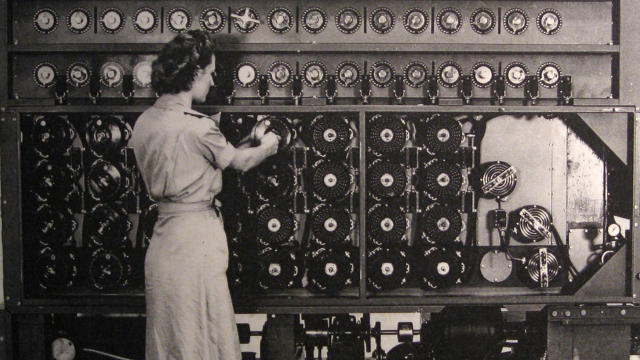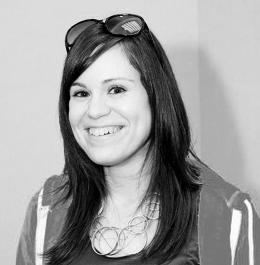The Women Changing The Face Of AI
Source: Cale Guthrie Weissman
 The idea was born in a hotel room.
The idea was born in a hotel room.
In 2005, Hanna Wallach, a machine-learning researcher, found herself bunking with colleagues to attend the Neural Information Systems Processing (NIPS) conference. Wallach had been working in the field since 2001 and had attended numerous conferences, but this was the first time she had roomed with other women who specialized in machine learning, a branch of artificial intelligence that researches how computer programs can learn and grow. As a discipline, it is overwhelmingly male: Wallach estimates that only 13.5% of the entire machine learning field is female.
At the conference, Wallach and her roommates, Jennifer Wortman Vaughan, Lisa Wainer, and Angela Yu, began discussing their experiences and commiserating about the lack of female allies. "We couldn’t believe that there were four of us [at the conference]," Wallach says. She, Vaughan, and Wainer made a list of 10 others in the field and fantasized about a meetup.
""It was incredible to see so many machine-learning women all there in the same space. None of us had experienced something like that before.""
The next year, in October 2006, Wallach, Vaughn, and Wainer organized the first Women in Machine Learning Conference. Attendance reached almost 100. "It was incredible to see so many machine-learning women all there in the same space," Wallach says. "None of us had experienced something like that before." (Yu attended the conference but did not cofound it.)
Over the past decade, the program has grown substantially, with attendance ballooning to more than 300. (Men are welcome at WiML, though they cannot present.) This year, the organizers had to close registration because they'd reached capacity for the venue. What began as a pie-in-the-sky dream at the NIPS conference has become an important, respected organization and support system for women in AI.

[Photo: Flickr user J Brew]
The Big Idea
When the founders first conceived of WiML, they figured it would be a one-off, standalone session at the Grace Hopper Conference, which is an annual celebration of women in the computing industry. But as they dug into the planning and scheduling of speakers and presentations, they realized one session wouldn't be enough. WiML would have to be a full-fledged conference that brought together as many women in the field as the founders could find. When the inaugural gathering turned out to be such a success, transforming WiML into an annual event was the next logical step.

Hanna WallachPhoto: via Twitter
The concept for the WiML conferences is simple: Experts from all over the world get together to learn what their colleagues are doing. Participants give presentations about their most recent work and discuss plans for future projects. There are other parts too, including mentoring opportunities and career roundtables. But as Wallach, who now works at Microsoft as a senior researcher, explains, the focus is on "the amazing research that people are doing."
And of course, WiML is a way for female machine-learning experts to support each other.
Two years after the 2006 conference, the cofounders decided to time WiML to coincide with NIPS, where the idea for their group began. The goal was to turn the WiML gathering into a one-of-a-kind networking event: Attendees would go to WiML, meet female colleagues, and then move on to the bigger conference, ideally feeling a sense of inclusiveness as they interfaced with the industry at large. "The attendees would end up recognizing each other at the main NIPS conference," Wallach says.
That spirit of support and community has become WiML's core ethos. "I joke that we call it nice people in machine learning," says Finale Doshi-Velez, a Harvard computer science professor and WiML executive board member. As an underrepresented group, women in AI can sometimes feel isolated; WiML offers them a forum in which they can feel comfortable sharing their work. "It can be very daunting for someone—male or female—who doesn’t know anyone," Doshi-Velez says, adding that the group strives to foster an exchange of ideas among attendees and communicate to them that it’s "totally okay to talk to the person next to you."
The need for WiML is obvious. Science has historically been a male-dominated discipline. Statistics from the National Science Foundation show that in 2006, only 21.3% of doctorates earned in computer science were by women; for engineering, that statistic dropped to 20.2%. A recent Bloomberg article noted that only 17% of today's computer science graduates are women, which indicates a marked decrease from a few years before.
It’s a systemic problem, and culture has a lot to do with it. As the Bloomberg piece noted, one of the big issues within machine learning and artificial intelligence is rooted in the data sets. Computers learn when they are fed data that reflects the world around them. Given the preponderance of men in the industry, they are the ones determining the information in the datasets that the computers are analyzing. This could give rise to intelligent machines that are inherently biased toward the questions prepared by male researchers.
Which makes it all the more crucial that the 13.5% of women in the field help rebalance the research with their work. Wallach has tackled this herself. Much of her research focuses on what’s called "fairness, accountability, and transparency" in machine learning, which is a way of taking into account minority occurrences that can get overlooked in big data processing. "I would advocate prioritizing vital social questions over data availability," she wrote in an essay explaining this very issue.
[Photo: Flickr user Kenneth Moyle]
A Better Future?
"Organizers for machine-learning events can no longer claim that they didn’t know where to find experienced women."
The big question is, what sort of impact is WiML making? Though the organization has existed for a decade, it's only been recently that the industry has begun acknowledging its diversity problem. "I wouldn’t be having a conversation like this three years ago," Wallach says. "When I started out in machine learning as a PhD student, I didn’t know any other women. Most of the people I knew were men."
That's no longer the case. Both Wallach and Doshi-Velez say gender representation has improved, even if parity is a long way away. "Any situation where you have an unbalanced population—it’s going to be an uphill battle," says Wallach. "We’ve taken the stance that it’s better to do something even if we don’t know it’s the optimal thing. That’s absolutely paid off."
The challenge going forward is not only to create programs that support women, but also ensure that they're gaining visibility throughout the industry. With that in mind, WiML recently created a formalized online database of women in machine learning. Readily available, the document is meant to offer proof that there are women who can speak at any conference, join a study, or offer their expertise in any capacity. Organizers for machine-learning events can no longer claim that they didn’t know where to find experienced women.
In December, the 11th annual conference for Women in Machine Learning will take place in Barcelona. As in the previous 10 years, there will undoubtedly be some game-changing presentations that push the industry forward. For her part, Doshi-Velez says it's time the greater computer science community acknowledged these accomplishments so that the dialogue can finally move past focusing on the challenges that women and other minorities in these advanced disciplines face. Many people, she says, "talk about the problem, which is important. But I don’t see as much about the solutions. We need to start publicizing that work."
| }
|